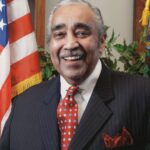As Donald Trump roams the country encouraging hatred of immigrants and distrust of the election process, in many places it’s immigrants and minorities who have reason to worry — about being blocked from the polls.
This November 8 will be the first presidential election since the 2013 Shelby v. Holder Supreme Court decision, which did away with provisions of the Voting Rights Act that protected minority voters from discriminatory practices at the polls.
The Shelby decision has been part of a more general trend toward voter suppression across the country since 2010, according to the Brennan Center for Justice. One of the most common measures is imposing strict requirements for voter ID. Restrictions on voting tend to disproportionately affect not only immigrants and people of color, but also young people and students, seniors, low-income people, and people with prior felony convictions.
According to the Brennan Center, just this year 14 states have put new laws into effect that restrict voting. And in the past six years, the states most likely to create new policies suppressing votes are ones that had the highest rates of African American turnout in the 2008 election that put President Obama in office, and ones that had the highest rates of Latino population growth between 2000 and 2010.
In addition to state-sanctioned measures, though, says Judith Browne Dianis, the executive director of The Advancement Project, “The other concern that we have for this election cycle is that we may see anti-democracy vigilantes being engaged in erecting barriers to the ballot.”
“The Trump campaign and other lawmakers at state and local levels have repeatedly lodged false claims about voter fraud that they say is widespread, and the Trump campaign has gone even further, calling for aggressive poll-watching,” she says. “There’s this continuing narrative of conjuring up the boogeyman who is going to steal an election.” Dianis spoke in a telebriefing organized by The Media Consortium.
Advocates are most concerned about places where the scaremongering around voter fraud intersects with anti-immigrant rhetoric and a backlash against people of color.
In Georgia, for example, there’s been a trend toward “precinct closings and precinct consolidations in predominantly black communities” that makes it harder for people to register to vote, according to Nse Ufot, the executive director of the New Georgia Project. The closures often happen “under the pretense of saving money.” For voting rights advocates, working against the tide is difficult because “each County Board of Elections is essentially run as a fiefdom.”
For immigrants in Florida, according to Maria Rodriguez, the executive director of the Florida Immigrant Coalition, “There is a systematic exclusion from the voting process and from democracy.” Florida has nearly a million undocumented immigrants, who are disenfranchised despite being “the backbone of agriculture and tourism.”
Additionally, Rodriguez says, among the state’s legal permanent residents, there’s currently a 66,000-case naturalization backlog “of people who had hoped to become eligible to vote in this election.” They will not be able to.
The news is not all dark, however. The New Georgia Project alone has registered more than 100,000 voters this year. In July, a federal court ruled against North Carolina’s strict voter ID law, stating that it “target[ed] African Americans with almost surgical precision.” In August, Virginia governor Terry McAuliffe restored voting rights to 13,000 people with felony convictions (after attempting, earlier in the year, to restore voting rights to 200,000 felons).
California, with its longtime Democratic legislature, has undertaken an abundance of measures over the past ten years to increase its voter rolls, including online registration and vote-by-mail. And in California, a third of new voters are Latino.
Indeed, in a broader sense, minority voters have more power than ever before. According to Pew Research Center, nearly one in three eligible voters in the upcoming election will be a member of a minority group, and minorities account for more than 40 percent of newly eligible voters born in the United States. In swing states, where margins are thin, the impact of ethnic voters is gaining importance. With the nation’s changing demographics, the tide will continue to turn.






